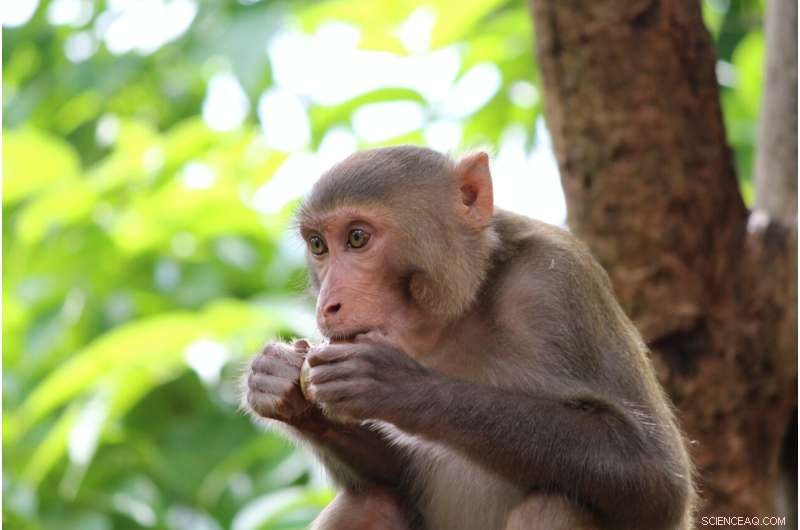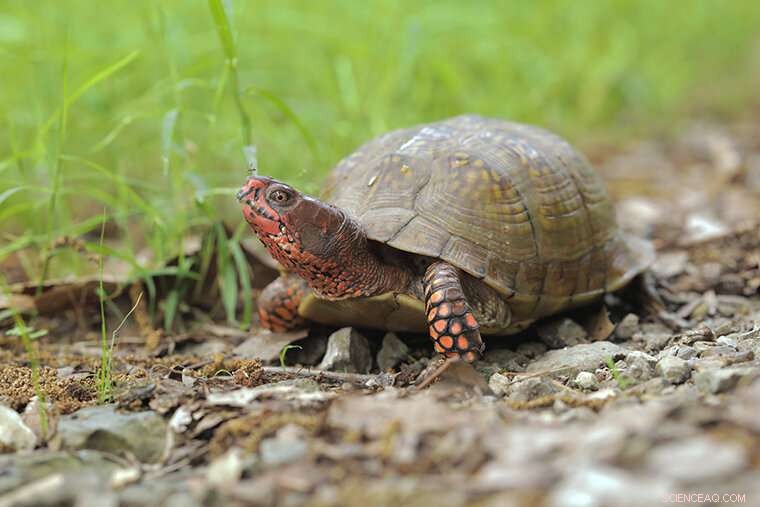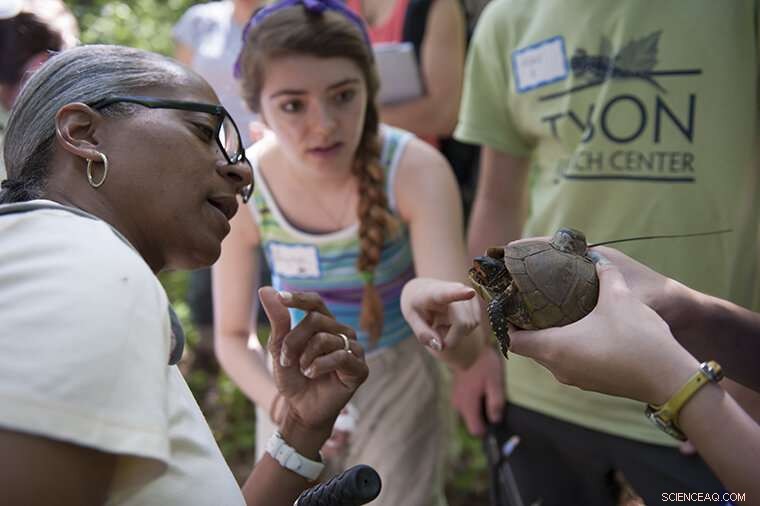
Crédito:Unsplash/CC0 Dominio público
El microbioma es la colección de microbios que colonizan un hábitat, cuerpo humano o de otra manera. Debido a la investigación pionera de microbiomas en la Facultad de Medicina de la Universidad de Washington en St. Louis, las personas de todo el mundo ahora entienden mucho más sobre el papel fundamental de los microbios intestinales en la salud y las enfermedades humanas.
Los animales y las plantas también dependen de miles de microbios diferentes para mantenerse con vida. Aunque se sabe menos sobre estas asociaciones, una nueva generación de científicos está explorando las relaciones entre un ejército oculto de microbios y las criaturas que sustentan y fortalecen. Estos Microbios de Diversos Ecosistemas (mDivE-STL) son el foco de un simposio de investigación del 3 de octubre organizado por Living Earth Collaborative.
En varias instituciones de investigación de St. Louis, los investigadores estudian microbiomas humanos y no humanos. Este simposio fue organizado para ayudar a fomentar una comunidad de investigadores que estudian diversos sistemas microbianos mientras se benefician de la gran fortaleza local en la experiencia del microbioma humano.
Tomemos, por ejemplo, los investigadores que estudian los monos aulladores negros (Alouatta pigra) en América del Norte y Central. Estos grandes y carismáticos monos son conocidos por hacer una de las llamadas más fuertes en los bosques tropicales de México, Guatemala y Belice.
Como herbívoros que habitan en los árboles, los monos aulladores negros consumen principalmente hojas, flores y frutos de árboles y vides. Debido a que carecen de enzimas capaces de digerir la celulosa, el carbohidrato que compone la pared celular de la hoja, los monos aulladores dependen de la fermentación provocada por su microbiota intestinal para obtener la energía que necesitan de estos alimentos.
Todo ese proceso puede ser mucho más dinámico de lo que se pensaba anteriormente, según una investigación de científicos de la Universidad de Washington. Está comenzando a surgir evidencia de que los cambios microbianos intestinales relacionados con la dieta amortiguan la disponibilidad de energía y nutrientes para animales como los monos aulladores negros.

Una tortuga de caja salvaje en el Tyson Research Center, la estación de campo ambiental de la Universidad de Washington. Con el apoyo de Living Earth Collaborative, los investigadores han ampliado el Proyecto St. Louis Box Turtle para caracterizar los microbiomas nativos de las tortugas de caja de tres dedos. Crédito:Thomas Malkowicz/Universidad de Washington
Elizabeth Mallott, profesora asistente de biología en Artes y Ciencias, utiliza la metabolómica para examinar cómo los metabolismos microbianos responden a los cambios en qué y cuánto comen sus anfitriones. Recientemente realizó un estudio con una población de monos aulladores negros salvajes que experimentan anualmente tres estaciones distintas que afectan sus dietas:una estación húmeda dominada por las frutas; una estación seca dominada por las hojas; y una estación seca dominada por la fruta.
"Podemos ver que cuando los monos comen más de un nutriente específico, los microbios intestinales metabolizan más ese nutriente", dijo Mallott, primer autor de la investigación publicada en Molecular Ecology. . "But beyond that, what was exciting is that we could look at the interactions between the microbes and the metabolites in different seasons, including seasons where the monkeys were limited nutritionally or energetically by the food that was available in their environment."
Microbes tend to compensate during lean times, Mallott discovered, prioritizing functions that provide more nutrients to the host. But that system falls apart when food availability becomes truly limited.
"Then the microbes seem to be scrambling. They just try to steal as many nutrients from each other as possible," said Mallott, who also looks at how environmental variation impacts the gut microbiome in humans.
Microbes could benefit species conservation
Studying the microbiomes of animal populations that thrive in the wild is important because it may provide researchers with candidate microbes and microbial consortia that could be used to improve disease resistance, nutrient absorption and ultimately the fitness of threatened species or animals that reside in degraded habitats.

Visitors take a close look at “Parkey,” a turtle tagged and tracked as part of the St. Louis Box Turtle Project. With support from the Living Earth Collaborative, researchers have expanded the project to characterize the native microbiomes of three-toed box turtles. Credit:Sid Hastings / Washington University
This is true for mammals including black howler monkeys, but also reptiles such as the Missouri native box turtles—including the ones that the Saint Louis Zoo Institute for Conservation Medicine has studied at two sites in the St. Louis area since 2012, as part of the St. Louis Box Turtle Project.
With support from the Living Earth Collaborative, researchers are expanding that effort to include characterizing the microbiomes of three-toed box turtles and exploring how they vary within and between populations. Scientists from the laboratory of Fangqiong Ling, an assistant professor of energy, environmental and chemical engineering at the McKelvey School of Engineering, are collaborating on this turtle project to integrate microorganisms into the wildlife conservation toolbox.
"In general, wildlife microbiomes—the bacteria, archaea, protists and viruses that are found inside and on the body—are an understudied aspect of biodiversity conservation," said Sharon L. Deem, director of the Institute for Conservation Medicine and of the Saint Louis Zoo WildCare Institute Center for Chelonian Conservation.
Deem and Mallott are both scheduled to speak at the Oct. 3 research symposium, which was organized by Ling, Gautam Dantas, a professor of pathology and immunology at the School of Medicine, and Jonathan Losos, the William H. Danforth Distinguished University Professor of biology in Arts &Sciences and director of the Living Earth Collaborative.
About half of the microbiome research that will be presented relates to animals, plants and the environment, while the rest is more closely related to human health.
"You can't really understand the human microbiome and its interesting dynamics if you don't consider it in the context of the environment," said Dantas, who describes the microbiome research in his laboratory as being about 90% focused on humans and 10% in other habitats, including plants, soil and the built environment. "Even if you're purely focused on the microbes in humans, you're not going to be able to explain the important dynamics of those of that ecosystem if you don't understand the interactions in microbes within and on the body, and where those microbes come from." Humans evolved with their microbiomes. Like genes, your gut microbes pass from one generation to the next